© Keri Webb
There were just the four of us as we grew up, and the only relatives we knew of were our two grandmothers, one very reserved aunt and a wonderfully eccentric uncle. We had no cousins, no family stories, no gossip, nothing. I was somewhere in my 40’s before curiosity got the better of me … surely there were more? What about grandfathers? Who were they? Why was there no mention of them?
It was then I found myself on a fascinating journey of discovery.
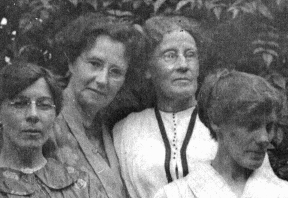
The first clue I found was a small old black and white photo. In very poor condition, and maybe from the1920’s, it was of my younger grandmother with her head closely inclined to a somewhat older woman. In friendship? Intimacy? Something in the eyes of that woman, in her demeanour, spoke to me. Was she a missing relative?
Following every lead I could find, soon something like an archeological dig seemed to have begun itself. And what an adventure that turned out to be! A dig that proceeded to unearth not just generations of previously unknown family members, but also fascinating facts and extraordinary historical events that tied these people and events together into an absorbing history set in the beginnings of our early colonial Australia.
As my search continued, it carried me back in time, eventually unearthing not only the identity of that woman in the photograph, but also an almost complete story of the life of her grandfather, Thomas Pye, son of a Second Fleet convict.
Tom’s entire life was lived in the most outrageous, unpredictable, and colourful period of Australia’s history – the early history of Colonial New South Wales. Born in 1800 to parents John Pye (highwayman it was said) and Mary Phillips, both Third Fleet convicts who had arrived in the primitive British penal colony of New South Wales in 1791. NSW was then a three year old settlement intermittently skirting starvation and only just starting to look like it might become something more than a completely disastrous experiment.
Stepping ashore carrying little more than a convict’s stigma, John and Mary promptly married and settled into a lifetime of what can only have been monumentally hard work. Famine, drought, low rations, and want of every conceivable kind existed in this world. There were neither tools, bullocks nor horses to do the work. All things had to be fashioned out of whatever was at hand. Ploughs and everything else were worked by human muscle power. Without a good dose of ingenuity, not much was done.
Good soil did exist in some places. But before it could provide crops or pasture, it had to be cleared of the dense native scrub. Stumps had to be removed, earth ploughed, seeded, weeded, and bugs continually removed – and all of this by hand, before even the smallest crop could be hoped for. Hard work and determination, not to mention luck, would be the least of what was required.
So there they were – convict husband and wife in something like a rough bush camp, with few possessions, with endless work on behalf of the Government and a growing string of children to take care of.
By 1807 this industrious family who had managed to stay on the right side of the authorities were now rewarded. Their very first land grant was a 30 acre plot located near the Government Farm at Toongabbie – a real prize because owning land brought tangible hope for a new life, for a future.
But while a highwayman may be good at getting on and off a horse, how much he knew about farming was likely to be another thing. Luckily, another Second fleet convict who toook up his grant right next door to John Pye, knew a great deal about farming. George Best had a solid farming background,was both capable and experienced and, as it turned out, the two of them became lifelong friends.
Along with George Best – both were praised in the Bigge Report on the effects of convict transportation – John Pye soon excelled at his new career. On his death in 1830, he had become a man of considerable means, able to leave generous parcels of his carefully accumulated lands to each member of his by then large family. So the hard work, determination, planning and can-do attitude of this couple, along with what had to be the co-operative efforts of the entire family, had paid off.
But back in January 1800, with the first 12 years of desperate near starvation past, while both cattle and horses remain scarce and highly valued, the colony’s population had grown to over 5,000. When son Tom was born, it was four years since John Pye’s first land grant. So with dad working full tilt in his fields and the more than a little busy Mrs Pye attending to the zillion other necessities of running a farming household and family, their oldest child Mary was now a capable seven years old with her own responsibilities. She was quite old enough to be little mother, not only to Joseph aged 4 and John aged 2, but to baby Thomas as well.
Meanwhile as subsequent control of the colony ping-ponged between a string of governors and officers of various abilities and intents, nothing was reliable and it s a stable or settled situation for no-one.
Governor King, who had replaced the first governor Governor Phillip, in his 1801 despatch, wrote:
“It is notorious that since Governor Phillip left this colony in 1792, the utmost licentiousness has prevailed… . It can scarce be credited that, in a soil and climate equal to the production of any plant or vegetable, out of 405 settlers scarce one grew either potato or cabbage”.
Then in 1804 the Pye’s fifth baby, Elizabeth, was born. Tom, then four years old was old enough to remember the frightening events that erupted around them just three days later: the notorious Castle Hill revolt – Australia’s Battle of Vinegar Hill.
For some time among the Irish convicts of the colony, discontent had been fermenting. On Sunday March 4th, with over 300 Irish involved, it erupted in an unprecedented large scale rebellion that swept across farms including those of the Pearces, Bests, and Pyes – families who would still have had in mind the outrage of the year before, when escaped convicts rampaged through the area and raped their neighbour, the Beans young daughter. To put an end the 1804 uprising, martial law was declared. Eventually nine of the rebels were hung.
But as the sun came up and the sun went down, for a farm to prosper, there were the essential daily routines that cannot be put off – animals to be fed, crops to be attended, and all the endless chores of prudent household management. And the Pye’s were prospering. Records show that they had established an orchard, were cross-breeding sheep, selling wool and meat, buying cloth, contracting for public works, and significantly – were regularly adding to their land holdings. It is easy to imagine that no hands lay idle in this family – even the youngest able bodied member contributed.
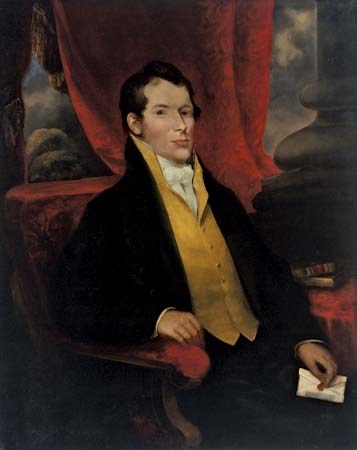
But then, in 1808 when Tom is eight, the Rum Rebellion – Australia’s only successful armed takeover of government – erupted. Tom no doubt remembered the tumultuous events surrounding the trouble-prone Governor Bligh. It was, perhaps, bad luck for Bligh to have run straight up against a man not entirely unlike his own obstreperous self, one who would later boast of having procured the dismissal of every Australian Governor up to and including Governor Macquarie – the notorious John Macarthur.
As a result of that conflict Bligh, who’d been sent to establish some semblance of order in the raggle-taggle colony, found himself locked up inside Government House by the rebel officers who could not abide his regulations. Meanwhile crowds rampaged in the streets of Sydney. Up and down the Parramatta river bonfires burned straw men, soldiers were on the move and protests were on every side. Whoever you were, and whatever side you favoured, no-one was immune to censure. No-one could forget those days.
Farce that this whole Governor Bligh episode was, it marked a turning point in the colony’s history, for the next person sent out to govern the colony was not just an experienced military man, but a Scotsman who dreamed of an ordered society, the emancipation of convicts, and a positive future for it’s motley group of citizens.
Under Lachlan Macquarie, streets were straightened, a currency instigated, weights measured, bridges built, and towns planned. At long last settlers gained some of the blessings of a firm hand, much needed comprehensive long-term planning and organisation and predictability.
But here in this land where climate is usually rated as one of it’s blessings, it also rates as a curse, for droughts and floods are common. When the drought of 1803 was followed by the drought of 1809-1811, the the drought of 1812-13 proved devastating. Crops withered, livestock perished, farmers and graziers faced financial ruin.
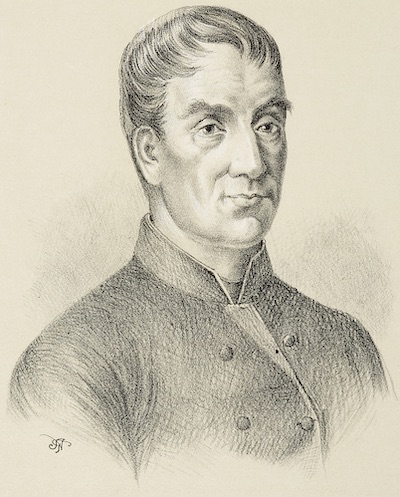
With the population of NSW now around 12,000 and growing, it badly needed more agricultural land but rugged terrain to the north and the south hemmed the settlement in. The notorious Blue Mountains barrier to the west had defied so many previous attempts to cross it that for years no-one had even bothered to try again.
Then in 1813, talk went round that three men, Blaxland, Wentworth and Lawson, were back from finding a viable way to cross the mountains. It was June – almost the shortest day of what turned out to be a pivotal year in the life of the colony – a colony that was now set to expand.
It was an eventful year in the life of the Pyes of Toongabbie as well, for not long after Tom turned 13 there was a death in the family. Mary, the oldest child, the sister who’d been little mother to him, died. She was just 19.
By the time he received his own first land grant Tom was 18. But then in these wind-driven sailing-ship days when nothing could be said to happen quickly, and most things appeared not to be happening at all, while a land grant was one thing, when and where you claimed it could be quite another. And so far the highly desirable new lands around Bathurst had not yet been settled.
Meanwhile both Thomas and his older brother Joseph were working these western lands, moving stock across the mountains to graze it’s fertile grasses, farming and sending wheat and maize back down to market. In 1824 from O’Connell Plains, for instance, Tom is recorded as sending tallow back to Sydney markets. These two close-working brothers were getting plenty of time and opportunity to assess the best lands for future settlement.
Thirty years later, in 1848, the editor of the first Bathurst newspaper recalled the times:
“In those days of inexperience, this (moving of stock) was no slight labour. We had not then, as now, some twenty yards of line on the road, where stock could be secured for the night; nor house of call nor of hospitality to supply the expended rations. The old ‘Weatherboarded hut’ , the shelving rock on top of the ‘Big Hill’, … offered shelter for the night, which, to use a common phrase, was ‘thankfully received'”… .
“To meet a traveler on this road in those days was ‘a cure for sore eyes’; and to hear the barking of a dog at Sidmouth Valley, or at O’Connell’s Plains, was sweet music; to obtain the first view of the Government Barn (Bathurst) was a sight that did the heart good. The few scattered sod huts of the town were viewed as little less than splendid dwellings.”
But in the 1820’s, west of the great divide was still frontier land. No-one knows what lay inland, to where a river flowed, or what lay beyond the horizon. Is there an inland sea? What lands, what peoples? Endless unanswered questions, untested possibilities. While lands found so far were highly desirable, besides the complete lack of goods and services, behaviour of the native aboriginals appeared unpredictable and outlaws infested the land. In short, it was far too dangerous for most men to think of bringing their families there to live.
So while nothing was for certain and the lifestyle was high-risk, challenging, and dangerous in every aspect, there were opportunities on every hand. For a capable young man bursting to test his mettle, this was an exciting place and exciting time to be alive.
Of course with so few police, and those there often having to travel great distances on horseback, there was lawlessness on both sides of the mountains. This was the time when Australia’s “Wild Colonial Boy” Jack Donahue was making himself infamous. In 1829 Tom was himself one of those bailed up on the road from Parramatta by Donahue’s associate John Walmsley. Holdups became so frequent that, for safety, travellers often resorted to travel in convoy.
It was December 1830 when Tom eventually married. Ann was from Parramatta, the 22 year old daughter of Mary Humm (Mary had been one of the arrivals from the Second Fleet’s Lady Juliana and hers is quite another story). As to whether or not young Ann had the least idea of the world and challenges she was about to be immersed in 30 miles south of Bathurst, we can only guess.
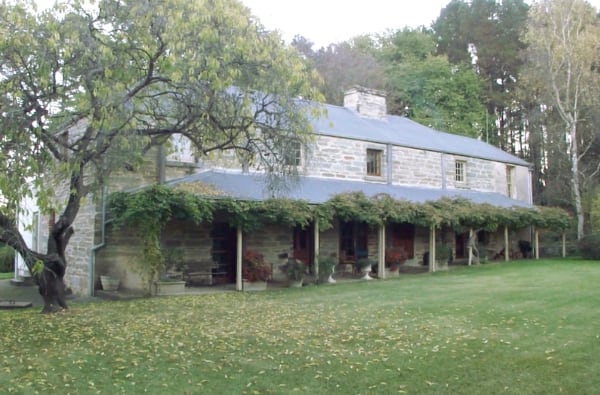
Since Tom had been working the land over the mountains for many years by then, it’s likely he already had his eye on what would become their Campbell River farm – the place they called Bunnamagoo. Set in picturesque, river-fed, fertile rolling hills, he could hardly have dreamed of better, for this was the land so highly prized by Macquarie on his 1815 trip over Evans’ newly constructed mountain road, that he reserved it exclusively for Government use. When the Government finally released it’s claim in 1829, it was where Tom took up his claim and built their new home.
Limited available man-power meant that fencing was impractical, which in turn means that there, far from anything that could be called civilisation, horse and cattle theft was rife. For some, theft and cattle duffing made for easy pickings and had become a way of life, and for the next 30 years or so, as any book on bushrangers will show, stories both violent and picaresque doted the area around Bathurst like spot-fires – the Ribbon gang, Ben Hall, Johnny Gilbert, the Clarke brothers, the notorious Frank Gardiner to name just a few.
Despite the dangers that lay there, it was where Tom and Ann Pye chose to settle and raise their five children. When their first child was due, Ann was sent down to Toongabbie where it was relatively safe, to where Tom’s experienced mother Mary could be the midwife. The family Bible records James Andrew Pye “born in the house of his father”.
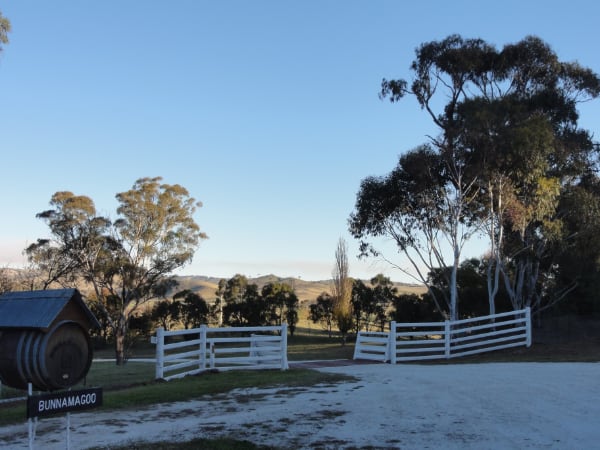
For two more decades all went very well indeed for Tom Pye and his family. Tom was a successful horse and cattle breeder. He expanded his land holdings and leases between Bunnamagoo and Bathurst, and further north towards Wellington, then south to Canowindra on the Lachlan. He also established his Eugowra and Bandon stations. Their boys were sent for the best education to Kings School, Parramatta. The family prospered.
Then in May 1851, the local newspaper burst with the surprise announcement that payable gold had been found at Ophir, just out of Bathurst. Australia’s first gold rush had begun. It turned the tide on Australia’s future, and just as abruptly, reverseed the fortunes of the Pye family and neither Tom nor Ann would survive the decade.
As the Bathurst population exploded, demand rapidly outstripped supply. Prices for goods and services, for everything, escalated. Those with jobs abandoned their work in a rapid general exodus to the gold fields for few could resist the lure of easy riches. In the process crops were raided and there was theft of every kind. Tom’s turnip crop was dug up, his wheat stores broken into. The old way of life was evaporating.
Just eight months after gold was discovered, the death of Ann Pye, aged 44, was announced in the paper. Tom tried to sell or to rent out the homestead property, with no success. His long-time neighbour Hanbury Clements Jr. purchased his Eugowra property. His boys were brought home from King’s School in Parramatta.
Then in March of 1855 James Andrew, Tom’s eldest son, married young Sarah Baxter, an only child and immigrant miss from St. Marys on the Parramatta side of the Mountains.
When in February of 1856 Tom realised a healthy profit from his horse and cattle sales at Melbourne’s Port Phillip markets, things were looking more optimistic than they had for years. But late on the night of February 18th, a Friday night of an almost full moon, Tom had gone upstairs to bed. Noises woke him. As he came downstairs, the two men who had forced entry turned on him and in the fierce struggle that erupted, Tom was knifed to within an inch of his life.
Though he managed to survive the assault – with the huge blood loss, the inevitable infections, the extensive physical mutilation sustained in multiple stab wounds to the neck, chest and wrist – such horrendous injuries combined to deal him a crippling blow.
The hue and cry in Bathurst that followed Tom’s assault, at last tracked down his assailant, and Thomas Morris, alias Ball, alias ‘White-headed Bob’ was finally brought to trial.
It is then that James and Sarah’s first baby, Tom’s first grandchild, died. And though Tom was clearly strong enough to survive the short term, it seems that no consolation and little joy remained in his life. With his health ruined, this strong and ambitious man was no longer able to ride free, to live the active outdoor life he’d made his own. On June 11th 1858, at his Seymour Street residence in Bathurst Town, Tom Pye of Bunnamagoo died.
NOTE:
It’s not long after Tom’s death that his son James Andrew joined the police force – and with all that had been going on it’s not difficult to imagine his state of mind. James then spent much of the 1860s pursuing various bushrangers, and in the aftermath of Australia’s infamous Gold Escort Robbery he is one of three officers who in 1864 captured Frank Gardiner who had bolted but was discovered holed up in Queensland’s Apis Creek.
So while these stories never seem to end, it’s time to take a break. I should mention that at the beginning of my search, that woman I wondered about in the photo turned out to be James Andrew’s first surviving daughter. And she was a relative – born in 1960, Ada Pye was grandmother to our family’s dad.
AND THIS?
Google tells us that Donati’s comet was discovered June 2 1858, – 9 days before Tom died. And interestingly in my mind at least, it was said to be an aboriginal belief that comets foretold death, disaster.
© Keri Webb
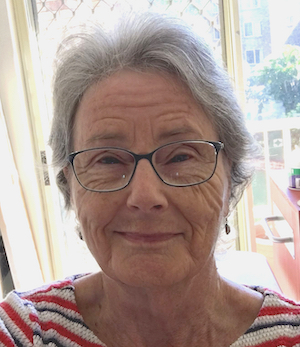 Keri Webb is a retired nurse, an artist and author with an interest in the lives and characters embedded in history.
Keri Webb is a retired nurse, an artist and author with an interest in the lives and characters embedded in history.
Read Keri’s articles:
